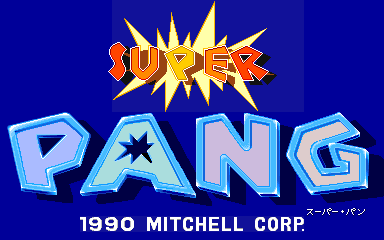Super Pang (Japan 901023)
Game Information
| manufacturer | Mitchell |
| year | 1990 |
| clone of | spang |
| other clones | sbbros spangbl spangbl2 spangj |
| genre | Shoot-'Em-Up |
| downloads | 143 |
Screenshots










Download Details
| split set | spangj.zip 440.13k |
| parent set | spang.zip 633.60k ↗ |
| bios/device | ym2413.zip 313.00b |
| standalone set | spangj.7z 572.56k |
Driver Details
| source | capcom/mitchell.cpp |
| status | good |
| emulation | good |
| savestate | supported |
Series Details
Screen Details
| display | screen |
| type | raster |
| orientation | horizontal |
| width | 384px |
| height | 240px |
| refresh | 57.42mhz |
Input Details
| player | 1 |
| type | joy |
| buttons | 2 |
| directions | 4 |
| player | 2 |
| type | joy |
| buttons | 2 |
| directions | 4 |
Chipset Details
| name | Zilog Z80 |
| clock | 7.63mhz |
| name | Speaker |
| clock | N/A |
| name | OKI MSM6295 ADPCM |
| clock | 0.95mhz |
| name | YM2413 OPLL |
| clock | 3.81mhz |
ROM Details
| name | size | crc |
|---|---|---|
| spj_06.11h | 32.00k | 1a548b0b |
| spj_07.13h | 128.00k | 14c2b765 |
| spj_08.14h | 128.00k | 4be4e5b7 |
| spj_02.1e | 128.00k | 419f69d7 |
| spj_03.3e | 128.00k | 3ae28bc1 |
| spj_04.1g | 128.00k | 6870506f |
| spj_05.2g | 128.00k | 4a060884 |
| spj_10.2k | 128.00k | eedd0ade |
| spj_09.1k | 128.00k | 04b41b75 |
| spj_01.1d | 128.00k | b96ea126 |
| eeprom-spangj.bin | 128.00b | 237c00eb |